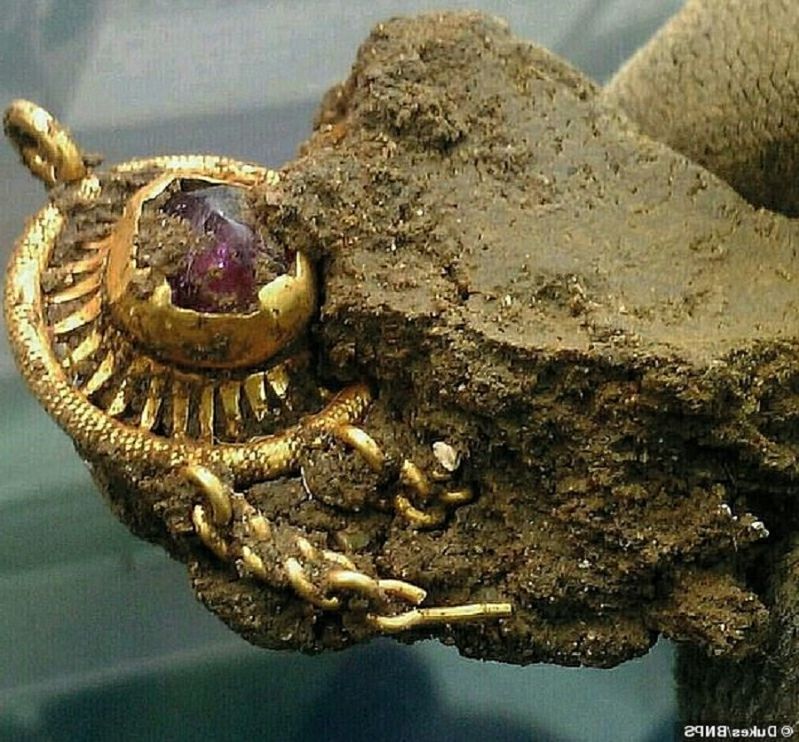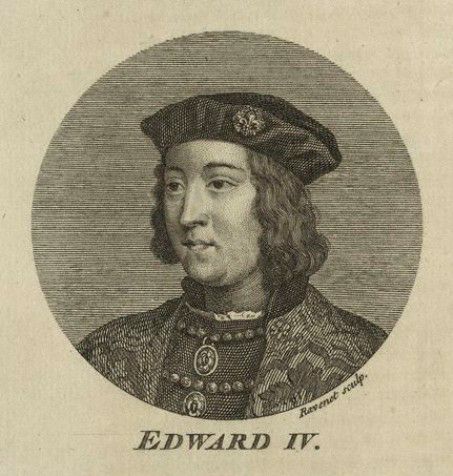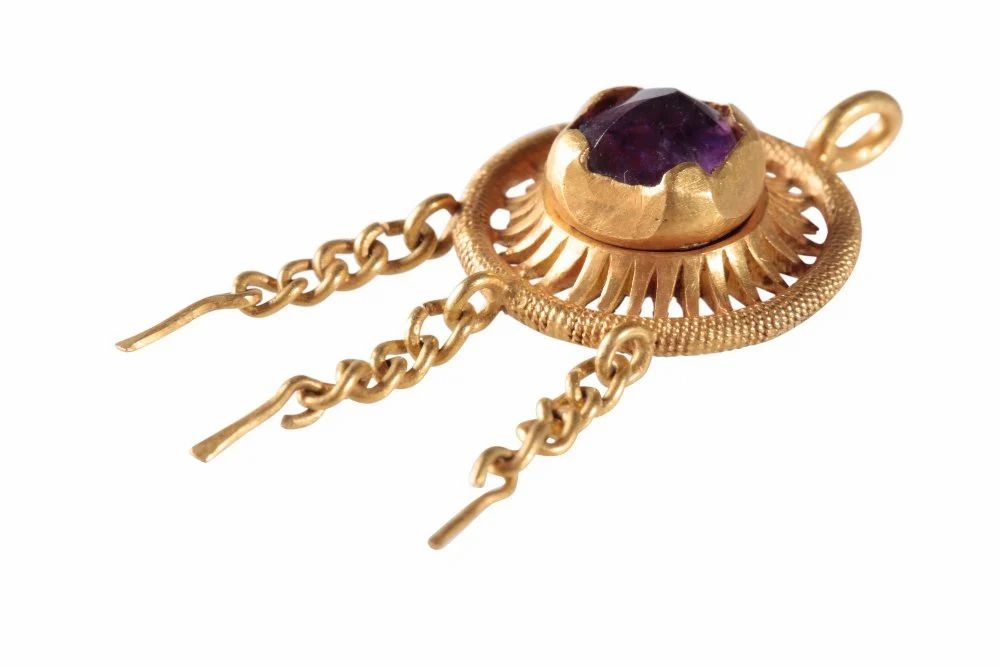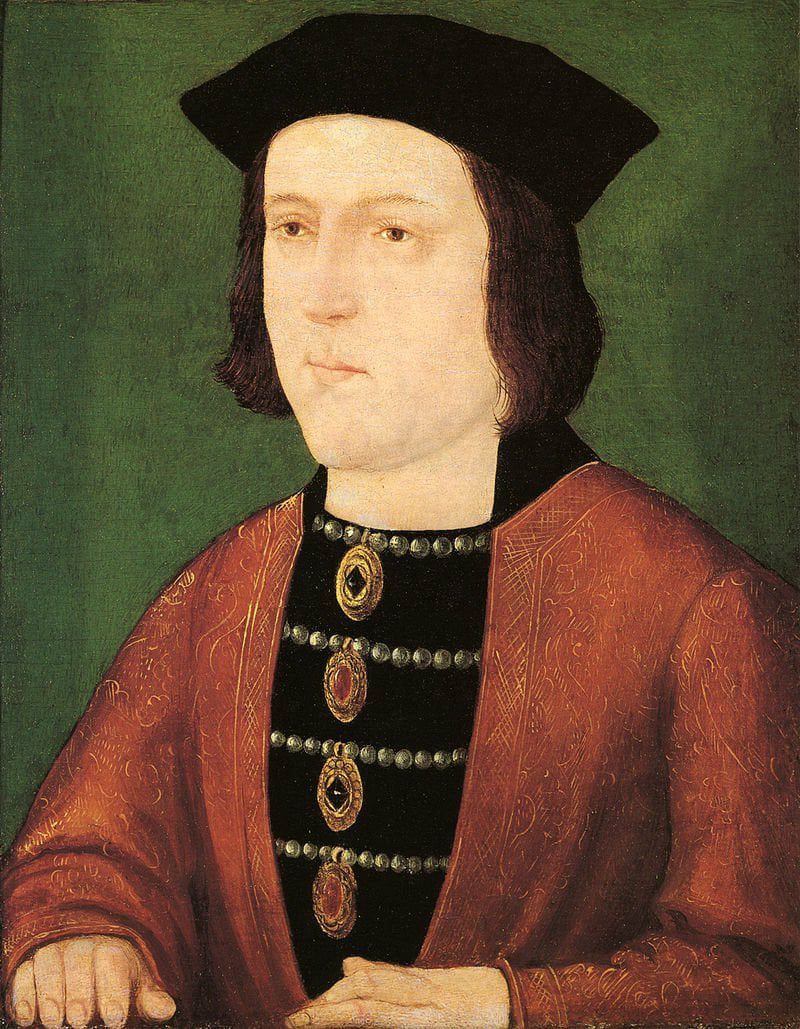Metal detector uncovers delicate £15,000 gold hat pin from 1485, possibly belonging to King Edward IV.
Unearthing a fascinating piece of history, a woman scanning a field with a metal detector stumbled upon a remarkable discovery. The item, which showcases one of the heraldic badges of the Yorkist king—a “sun in splendor”—has sparked intrigue and revived the spotlight on this royal emblem. The find, an impressive gold hatpin, was unearthed near Horncastle, Lincolnshire in 2013 and could potentially have belonged to Edward IV or a member of his court. Estimated to be valued between £10,000 to £15,000 (approximately $13,000 to $19,500 USD), this treasure is set to be auctioned later this month.
The hatpin, described in the Duke’s Auctioneers catalogue, features a center amethyst surrounded by a radiant sun with multiple rays. Hanging beneath the purple jewel are three gold chain links adorned with pearls, which were believed to offer protection to the wearer during medieval times and were associated with royalty.
Similar gold hatpins have been depicted in portraits of medieval monarchs. For instance, a twentieth-century portrayal of Edward IV, currently on display at the Bendigo Art Gallery in Australia, depicts him wearing a jeweled circular hatpin topped with three dangling pearls. Another painting, portraying Henry VII, the Tudor king who ended the York dynasty’s reign over England, shows him wearing a red jewel encircled by gold and three hanging pearls.
Experts, including Guy Schwinge of Duke’s, suggest that the recovered hatpin may have belonged to Edward IV based on these portraits. However, the true identity of its owner remains uncertain. What is evident is that the hatpin was owned by someone of high status within the upper echelons of medieval society.
The individual who made the remarkable discovery, Lisa Grace, recounts how she found the hatpin just beneath the surface of a recently plowed field in Lincolnshire. Initially unaware of its significance, Grace only realized its historical value after consulting with friends and conducting extensive research on the jewel.
The presence of an amethyst in the hatpin suggests the possibility that it was lost during a battle. It was not uncommon for soldiers to wear precious stones, such as amethysts, in combat situations, believing that they could bring protection and ward off harm and defeat.
The Battle of Mortimer’s Cross, where the Yorkist regime solidified its connection with the sun, was just one of the many conflicts that took place during the Wars of the Roses, a 30-year series of civil wars. Although the sight of three suns in the sky initially boosted the morale of the Yorkists, their subsequent victories were short-lived. Edward’s former ally, Richard Neville, Earl of Warwick, turned against him, aligning himself with Margaret of Anjou and the Lancastrians. However, Edward regrouped and triumphed over the Lancastrians at the Battle of Tewkesbury, ultimately reclaiming the throne. He ruled over a united England until his unexpected death in 1483. Edward’s young son briefly succeeded him but was soon deposed in favor of Richard III.
Interestingly, the decline of the York dynasty was marked by another significant meteorological event, similar to the one that had heralded its rise. Anne Neville, Richard’s queen and daughter of the Earl of Warwick, passed away in March 1485, shortly before Richard’s defeat at the Battle of Bosworth. According to popular accounts, a total eclipse occurred on the day of Anne’s death, plunging the realm into darkness. While some may have interpreted this event as a sign of Richard’s downfall, historians suggest it is a retrospective interpretation made after Richard’s death.
Shakespeare, in his play Henry VI, Part 3, cleverly incorporated a literary reference to the celestial phenomenon that hinted at the York dynasty’s fate. Symbolically connecting the three sons of York—Edward IV, Richard III, and their brother George, Duke of Clarence—to the three suns, Shakespeare had Edward declare: “I think it summons us, brother, to the battlefield, / That we, the sons of brave Plantagenet, / Each one already shining with our accomplishments, / Should unite our powers and outshine the world as this sun does the earth.” This poetic passage encapsulates the ambition and determination of the Yorkist heirs, drawing a parallel between their radiance and the extraordinary spectacle of the triple suns.
Hits: 0







